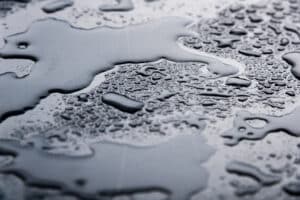Dealing with Stinky Drains and Smelly Water? Here are the Top Reasons
As a homeowner, you want to live in a pleasant and comfortable environment. But when you’re constantly dealing with a stinky drain or smelly water supply, achieving that comfortable environment is near impossible.
There are three common reasons as to why your water or drains have begun to stink. These issues can be resolved quickly by a plumbing professional, leaving you with a healthy, safe, and odor-free home once again.
1. Ventilation Problems
Problem: Most modern homes are equipped with a ventilation system that works to remove sewer gases. These systems work by allowing atmospheric pressure in, and letting air and sewer gas escape into the outdoor environment.
However, these ventilation systems can become clogged up for a variety of reasons including:
- An animal’s nest is blocking the exterior vent.
- A large amount of snow has blocked the ventilation.
- Debris or leaves are clogging up the vent.
When these clogs occur, sewer gas backs up and is forced back into the toilets and waste pipes within your home.
Solution: If you have a simple clog, it can easily be removed if in a safe and accessible location. Otherwise, call your local plumbing expert.
They can work safely to remove the clog, without harming any animals or damaging your ventilation system.
2. Water Heater
Problem: As a dark, moist environment, water heaters are an ideal breeding ground for smelly bacteria.
When a large number of these bacteria interact with sulfur and metal components within a plumbing system, they can quickly create that unmistakable “rotten egg” odor. This smell can pollute the water, and spread throughout a home quickly.
Solution: Much of the time, all that is required is a good water heater cleaning. Use hydrogen peroxide (H2O2), which works to kill the bacteria within a water heater without damaging the water heater itself.
Luckily, hydrogen peroxide is also safe for the environment, as it breaks down into oxygen and water.
If you’re still finding a foul smell coming from your water heater, you might want to consider replacing your anode. The anode is a metal bar located in the water heater, and is commonly made from magnesium or aluminum.
These metals interact with the sulfur and bacteria, and add to the foul smell. Instead, install an anode made of both zinc and aluminum, as this will help to limit the number of bacteria present.
3. Dry P-Traps
Problem: The u-shaped part of a drain commonly found in post homes is called the p-trap. This trap contains water, forming a seal against the escape of sewer gases into a home.
Instead, the gas is directed to a ventilation system, leading it out of a home and into the outside environment.
P-traps can dry out, due to a variety of reasons:
- If there is a leak in the p-trap.
- If a blockage has caused the water to siphon out.
- If the drain has not been used for an extended period.
Solution: To solve a dried-up p-trap problem in a pipe that has not been used as of late, simply run the tap for a few minutes.
This water flow will refill the p-trap and re-form the seal.
This eliminates the escape of sewer gas through the drain. However, if the smell is coming from a pipe that is often used, inspect the drain for more pressing issues.
Call a plumber immediately, as these leaks and blockages can quickly create a larger, more critical plumbing issue.








